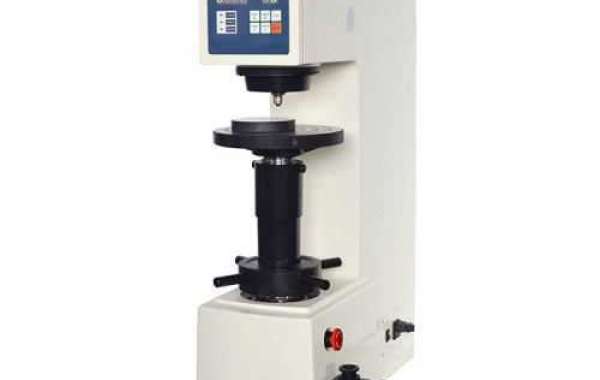Several signs indicate that your Brinell Hardness Tester may require maintenance:
Indenter Ball
- Physical damage: Examine the ball for surface irregularities, chips, and cracks. Indentation size and test accuracy are impacted by these deformities.
- Inconsistent indentations: The size and form of the indentations should be uniform. It might be the result of a worn-out or damaged ball if they differ.
- Incorrect diameter: With a high-precision instrument, measure the diameter of the ball regularly. Replace the ball if it fails to meet the specified size.
Anvils
- Surface imperfections: Test accuracy and the shape of the indentation can be impacted by gouges, scratches, and uneven surfaces.
- Uneven wear: The anvils may wear unevenly over time, which could cause readings to be off. Check them frequently and replace them if needed.
Machine Performance
- Excessive noise or vibration: Silent and smooth operation is typical. If you hear excessive noise or vibration, it might be a sign of internal wear or misalignment that needs to be checked by a professional.
- Inconsistent test results: Significant variation in test results for the same material indicates a possible problem with the tester's functionality or calibration.
- Difficulty in operation: It may indicate internal problems that need to be serviced if you find it harder to operate the machine, as indicated by resistance or strange movement.
Additional Signs
- Oil leaks: Oil leaks near the machine may be a sign of deteriorated seals or other internal problems that need to be fixed.
- Indicator malfunction: Inaccurate readings may result from malfunctioning of the indicator used to gauge the indentation size.
- Expired calibration: Make sure the calibration of your Brinell Hardness Tester matches the suggested usage frequency and guidelines provided by the manufacturer.
Proactive Maintenance
- Regular cleaning: To avoid dirt and debris buildup that could impair accuracy, clean the indenter ball, anvils, and other parts regularly, as directed by the manufacturer.
- Lubrication: To guarantee smooth operation and minimize wear and tear, lubricate moving parts according to the manufacturer's instructions.
- Record keeping: Keep a record of every maintenance procedure you do on the machine. This makes it easier to monitor its state and spot possible problems early.
- Manufacturer's guidance: For recommendations and specific maintenance instructions for your model of Brinell Hardness Tester, always consult the manufacturer's manual.
You may guarantee that your Brinell Hardness Tester stays in top condition and delivers accurate results for extended periods by being aware of these indicators and putting proactive maintenance procedures into place. Recall that early detection of possible problems can save expensive repairs and preserve the precision of your hardness measurements.














